
Hubs come in three different configurations: standalone, stackable and modular.
Standalone Standalone hubs are single box products with a certain number of ports. They are the least expensive and often cannot be controlled by network management tools. Standalone hubs are best suited for small, independent workgroups with fewer than 12 users. You can connect standalone hubs to other standalone hubs with the appropriate cabling.
Stackable Stackable hubs are similiar to standalone hubs except that they're, well, stackable. When linked together they act like a modular hub and can be managed as a single unit. These hubs are ideal for smaller organizations that expect the LAN to continue to grow. Stackables keep the initial investment low and allow for expansion as needed.
Modular Modular hubs range in size from four to 14 slots, making expansion easy. An advantage of some modular hubs is that Ethernet, Token Ring, and FDDI communcations can be placed in the same rackmount chassis, use the same common power supplies, and allow for centralized management.
Many hubs are available on the market today in prices ranging from $85 to a few thousand. The choice on which one you get depends on the size and bandwidth of the network. You have to research hubs to decide on which one is the best for your network. Don't jump for the cheapest one. If the hub goes down, your whole network goes down.
3com Officeconnect 8/TPO 10-Base-T Unmanaged Hub. They also have a managed hubs and 100-Base-T hubs. The prices range from $119 to $900.


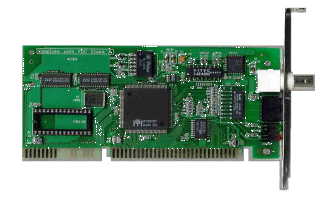
For the cable to make the run from the wiring closet to the work area
should be Solid, which means that the copper is
solid. When making patch cables (It is probably better to buy them)
you will need Stranded cable, which has little strands of copper compared
to the solid cable. This can take more flexing than solid cable.
First measure how much cable you will need. Remember to give yourself
25 feet extra for mistakes and so on. Remember about the walls and how
much extra you will need for fishing up the wall. You have two options.
One, buy a pre
measured 1000ft or 500ft roll for about $.10 a foot. The second choice
is to buy how much you need for around $.12 to
$.15 cents a foot.
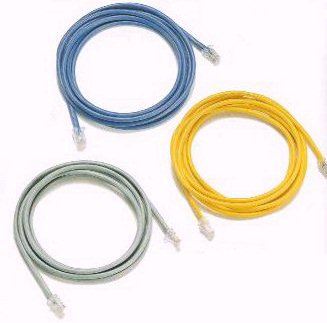
If you want to get a "real" tester you can buy the Siemon STM-8 tester
which usually sells for around $200. Some others
priceout from the $200 to $5000 range.
You can also test your cables by connecting a computer with a properly
configured NIC into your hub and see if the
green light for that specific port goes on. If it doesn't you should
check that your terminations are correct on both sides of
the cable. If the terminations are correct and you still have a problem
check the patch cords. They should be straight,
meaning that their pins should be in a straight line, not crossed.
To check hold the patch cords modular connecters flat
side up where the copper contacts are and make sure that pin 1 goes
matches pin 1 on the other side. The only reason
that you would need to have a "crossed" cable would be if you are connecting
one computer to the other without a hub.
If that still doesn't work buy a cable tester or have a data cabling
contractor help you out. They may be nice and rent you
their cable tester on the weekend or something like that.



Part of a network's overall design includes a decision about how network
resources will be shared and managed. Early
networks used central file servers to manage access to shared files
and printers. These servers were often workstations
dedicated to sharing resources or running network file server-related
applications (for example, database engines).
Examples of network operating systems (NOSs) that support the central
file server model include Microsoft LAN
Manager and Novell(R) NetWare(R). The peer-to-peer network model was
developed more recently. Network
workstations in a peer-to-peer model can access resources shared by
another user and share resources on their local
workstations to allow access by other members of their workgroup. Windows
for Workgroups supports the peer-to-peer networking model.
The central file server model requires that all file sharing take place
on the LAN server itself. That is, if the file server is the central repository
of information, then all exchanges of information between workstations
on a LAN must first pass
through the file server. This model is commonly implemented in an environment
where the workstations don't have the
processing power or the resources capable of supporting networking
server functionality. For example, the workstations
may not have enough memory or may have small-capacity hard disks.
In the peer-to-peer networking model, each workstation (or at least
one workstation) in a file-transfer scenario acts as
both a client and a server. As a client, the workstation can access
the network resources shared by another workstation.
This model is commonly implemented in an environment where workstations
have the processing power and resources to
provide network server functionality or where the cost of dedicating
a workstation as a server is prohibitively high. The
peer-to-peer model is more flexible than the central file server model
because a workstation can directly access the
shared resources of another workstation.
To illustrate the differences between the central file server model
and the peer-to-peer networking model, let's say two
workstations, Workstation A and Workstation B, want to share a document.
The document was created on Workstation A and resides on Workstation A's
hard disk.
In the central file server model, Workstation A must connect to the
server, place the document on the server's hard disk,
then inform Workstation B that the document is available. Workstation
B can then connect to the server and access the
document left there by Workstation A. In the meantime, unless Workstation
A is working with the specified document
directly on the file server (that is, making modifications to the version
of the document that resides on the file server), the
version of the document that may reside on Workstation A's hard disk
will likely become out of sync with the version of
the document Workstation B is now using.
In the peer-to-peer networking model, Workstation A simply grants Workstation
B permission to access the directory
where the files are located on Workstation A's hard disk. Workstation
B can then directly connect to Workstation A and
access the document. Another way to provide Workstation B with the
document that Workstation A created is to have
Workstation B give Workstation A access to a shared directory on Workstation
B. Then Workstation A can copy the
document from its hard disk to the shared directory on Workstation
B--however, the latter procedure suffers from the
same scenario as the central file server model where the versions of
the documents may get out of sync. Since both
workstations are considered to be peers, both support client and server
functionality.
One note on Lantastic, It is slow! (Sorry Artisoft. Its the truth) It
claims that it has security features that keep
unauthorized people out. It works, but not well. If you press escape
at the network login, you go right in, network
access and all.
The only Windows OS' that have a built in peer to peer networking support
are Windows 95, Windows NT
Workstation, Windows NT Server, Windows 98 and Windows for Workgroups
(3.11).
A instruction sheet for configuring Windows 95 peer to peer networking
can be found here.
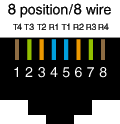

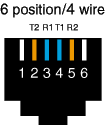
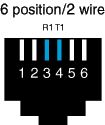

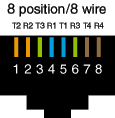
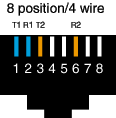
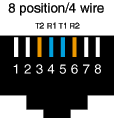
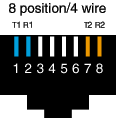
Cable Puller's Required Tools
Screwdrivers - #2 Phillips, 1/4 and 1/8 Flat
Tip
Pliers - Needle Nose, Slip Joint, Diagonals
Torpedo Level
Sheet Rock Saw
Aviation Snips
16 oz. Hammmer
16 ft. Tape Measure
Sharpie Black Marker, Pens, Pencils
Maglite or other type of small flashlight.
Tool Bag
Tool Belt with pouch
Electric Tape
Utility Knife and Razor Knife
Punchdown Tool with 110 & 66 blades
Electricans Scissors and Cable Splicer Knife
4" and 7" Cable Ties
Cable Installers Required Tools
Spudger
Tone send and wand
Butt Test Set
Modapt or Banjo Breakout
Drywall Screws
4" and 7" cable ties
Electricans Scissors and Cable Splicer Knife
Utility and Razor Knife
Senior Installer
All Installer Tools plus the following:
Battery Drill and Wood and Masonary Bits
Cable Tester
Modular Plug Crimper (Must be able to use
AMP and Siemon plugs)
Label Maker
Rack Screws
Faceplate parts (i.e. screws, icons, etc.)
Extra Patch Cords and Jacks
All trademarks are owned by their respective owners.
